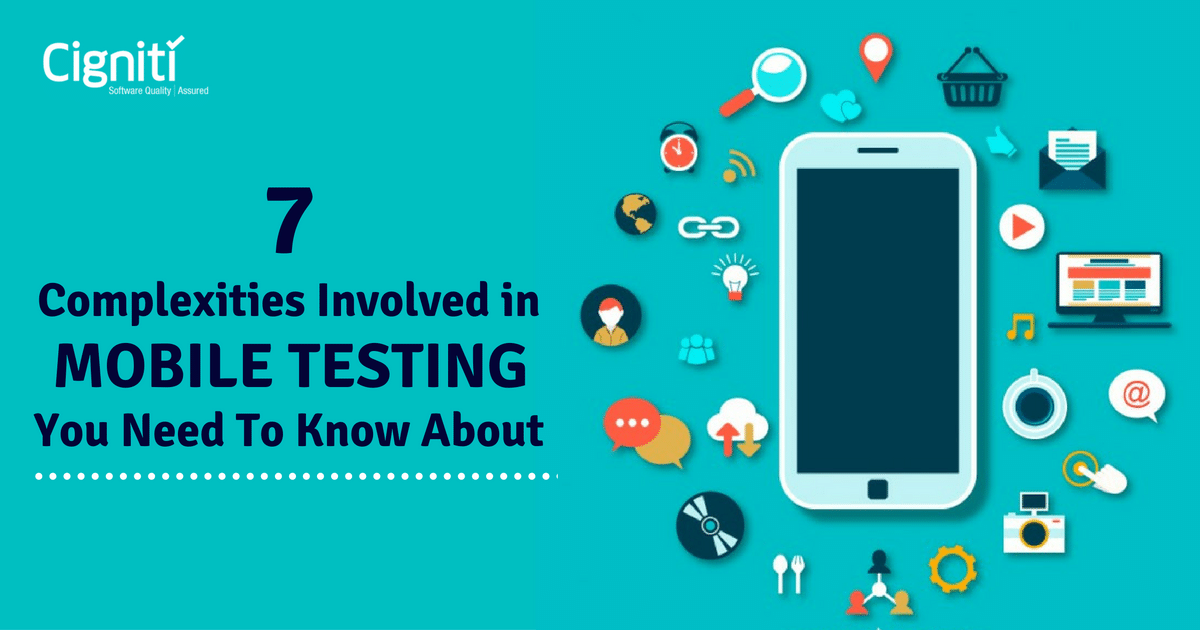What can a well-tested Mobile Banking application do for your business?
A recent study by CSI executives involved interaction with U.S. financial institutions where these institutions were asked about the banking industry – strategic priorities, budgets, planning, technology choices, current trends, raising concern areas, compliance trends and much more. During the course of the study when the executives rated their proficiency in some select key areas, these were the finding, “Nearly 80% of bankers were confident in their institution’s mobile app and digital offerings. This correlated with an annual consumer poll by CSI, which found that 86% of all Americans were happy with their banks’ current digital banking tools.” Banking applications and ensuring their digital smoothness is absolutely business critical. But how can you practically define and decide the efficiency and fineness of your financial apps?
The report went on to state that, “Nearly 60% of bankers identified social media as an institutional weakness. This is a problem that needs addressing since, according to American consumers, 47% aged 18-34 think it’s important for their bank to be active on social media.” Digital Transformation in the banking and financial segment has certainly presented numerous opportunities, but has posed innumerable threats as well. Financial institutions are busy juggling with challenges on 2 major fronts – Technology adoption and Consumer Experience.
Mobile applications have emerged to be the most intimate and direct source for ensuring and reinforcing seamless customer experience along with consistent technological advancements. The global mobile application testing solution market is anticipated to witness significant revenue growth during 2018-2023, owing to a rising demand across commercial and corporate sectors. Requirements for regression testing, the need to tackle issues caused due to device diversity, and increasing mobile applications such as m-commerce are the major drivers for the rise in demand for mobile application testing solutions globally.
What makes Software Testing for Mobile Applications indispensable?
The last couple of years have been all about digital transformation, its immediate benefits for the industry, and much more on that front. Mobile Applications have surpassed the level at which businesses can directly connect and get to know their customers. Interestingly, in a recent development, Amazon is launching Amazon Moments, a service that lets you reward customers in more than 100 countries on iOS, Android, FireOS, and other platforms. Moments is a marketing tool for mobile games and apps, which is already being used by TikTok, Bravo, Sony Crackle, Sesame Street, Washington Post, Disney Heroes, and more.
Mobile Application Testing, is an indispensable step in the application development strategy that the financial sector cannot miss or mess with!
How good-looking is your user application?
Visualize, Conceptualize, Create…some key steps to ensure that your application serves its purpose and gets the required attention. Is the user interface simple enough, are the key functional areas clear, is the look appealing and responsive to the user needs? These are some apparent concerns that Software Testing and QA helps in resolving. Ensuring performance, functionality, accessibility, and compatibility of the application is critical for any financial app to get successful and bring value for the users and the end consumers of the service.
Successful Transactions, Secure Interface.
Payment gateways and seamless transactions is fundamentally essential in the financial services domain. Moreover, with the current uncertainties with networks, software, and devices, ensuring smooth and secure financial transactions is a growing concern. Along with it, the application must provide additional details regarding the financial transactions, such as payee details, adding fresh payee information, preview of the transactions, last 10 transactions, detailed account statements and few more similar details.
Moreover, with Artificial Intelligence (AI) being introduced, the customer should be able to reach out easily for help in case of an issue or fraud emergency. Even a quick help from a personal banker might not be a bad idea. All these services and issues must be tested in a controlled environment to not only determine its success, but also its failure.
Third-party transactions and notifications
Who says that a financial app can only facilitate financial transaction? It can and has to do more than that. It serves to requirements such as providing financial advice and related notifications, sending birthday or anniversary wishes and related offers, shopping interface, window to buy policies across the application, credit monitoring, loan related services and EMI tracking, utility bill payments, and much more that keeps reinventing.
Testing methodologies such as Service Virtualization, Agile, and DevOps help development teams to keep rolling out new facilities with confirmation that the performance and security risks are minimal. Also, if there is a risk that knocks about, there is a disaster management mechanism as well.
Convergence with Devices
For the millennials, mobile devices are merely a facilitator to converge with other devices, especially, wearables. As per New Research, Smart Wearables Market estimated to grow with a CAGR of 14.66% in near Future by Top Companies like Fitbit, Xiaomi, Apple, Garmin, Samsung, Jawbone, Misfit, Polar, Moto, Huawei. Smart Wearables market size to maintain the average annual growth rate of 14.66% from 20500 million $ in 2014 to 30900 million $ in 2017, The analysts believe that in the next few years, Smart Wearables market size will be further expanded by 2025. The market size of the Smart Wearables will reach 58000 million $.
While these numbers are exciting and encouraging, the challenges surrounding this market are phenomenal in nature. There are integration and compatibility issues that these manufacturers and application developers must deal with through the development and consumer lifecycle. This can be resolved by implementing testing methodologies such as Continuous Development, Deployment, and Continuous Integration. This is critical, as the investments and stakes are high in this domain.
The banking domain is replete with ever changing and cutting-edge technology, with ever more intricate functionality intertwined into applications. Business Continuity, Service Delivery, and Performance are key aspects that need to be kept in mind for improving and increasing RoI.





Leave a Reply